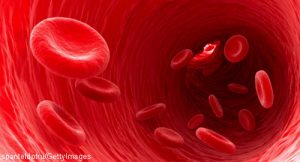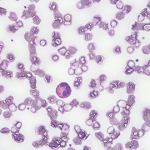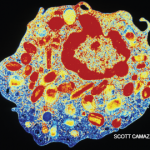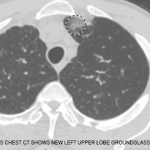 ACR CONVERGENCE 2021—Hypereosinophilic syndromes (HES) include a wide array of rare diseases characterized by peripheral eosinophilia and end-organ involvement. Because eosinophilic granulomatosis with polyangiitis (EGPA) occupies the space between HES and vasculitis, rheumatologists are often tasked with diagnosing and managing other HES, as well. Amy D. Klion, MD, chief of the Human Eosinophil Section, U.S. National Institutes of Health and National Institutes for Allergy and Infectious Diseases (NIH/NIAID), Bethesda, Md., provided a detailed overview of the EGPA and HES spectrum at ACR Convergence 2021, Nov. 3–9, 2021.
ACR CONVERGENCE 2021—Hypereosinophilic syndromes (HES) include a wide array of rare diseases characterized by peripheral eosinophilia and end-organ involvement. Because eosinophilic granulomatosis with polyangiitis (EGPA) occupies the space between HES and vasculitis, rheumatologists are often tasked with diagnosing and managing other HES, as well. Amy D. Klion, MD, chief of the Human Eosinophil Section, U.S. National Institutes of Health and National Institutes for Allergy and Infectious Diseases (NIH/NIAID), Bethesda, Md., provided a detailed overview of the EGPA and HES spectrum at ACR Convergence 2021, Nov. 3–9, 2021.
Hypereosinophilic Syndromes
HES is an umbrella category for several clinical subtypes. In the NIH cohort, greater than 50% fall into the idiopathic HES (iHES) category.
“Despite extensive evaluation, no apparent etiology is identified, and the clinical picture does not fit one of the defined subtypes,” Dr. Klion said. “Further, a subset of patients [with an idiopathic hypereosinophilic syndrome] is completely asymptomatic and have no evidence of end-organ involvement.”1
Overlap HES is also common. Example: A single-organ eosinophilic disorder, such as chronic eosinophilic pneumonia, may overlap with iHES, or EGPA may overlap with HES. “This is important to recognize [because] the therapeutic approach may be different,” she said.
Marked eosinophilia may also occur in a variety of myeloid neoplasms and myeloproliferative disorders. Platelet-derived growth factor receptor-α (PDGFRα) associated myeloid neoplasm is the most common in this category. It’s caused by an interstitial deletion in chromosome 4 that leads to a constitutively activated fusion tyrosine kinase. Fortunately, this variant is sensitive to imatinib. Before imatinib, three-year mortality was 30%.2
EGPA
Although most rheumatologists think of EGPA as separate from HES, the signs and symptoms are similar. Anti-neutrophil cytoplasmic antibodies (ANCA) are positive in less than 50% of patients with biopsy-proven EGPA, so we cannot rely on ANCA testing alone to differentiate the two. EGPA and HES with asthma or sinusitis show overlapping serum biomarker profiles, so we cannot rely on this profile to separate them either.3
“So are EGPA and HES a spectrum or an overlap?” Dr. Klion asked.
Recent studies have shown that ANCA-positive EGPA patients are more likely to have neurologic involvement, renal involvement and purpura, but less likely to have cardiac involvement. Relapses are more common in the ANCA-positive group, but mortality is increased in the ANCA-negative group.4,5
How should we approach ANCA-negative EGPA patients who don’t fall into a neat little box? Dr. Klion said, “Most of the patients with EGPA/HES overlap are ANCA negative. So when we have an HES patient who has features of EGPA without biopsy-proven vasculitis, we treat them the way the 2021 ACR/Vasculitis Foundation Guideline for the Treatment and Management of ANCA-Associated Vasculitis would recommend you treat EGPA. But if they don’t respond to this approach, we try another agent that works for both, [such as] mepolizumab. Fortunately, mepolizumab is now FDA approved for the treatment of both HES and EGPA, so insurance approval has gotten easier.”6



